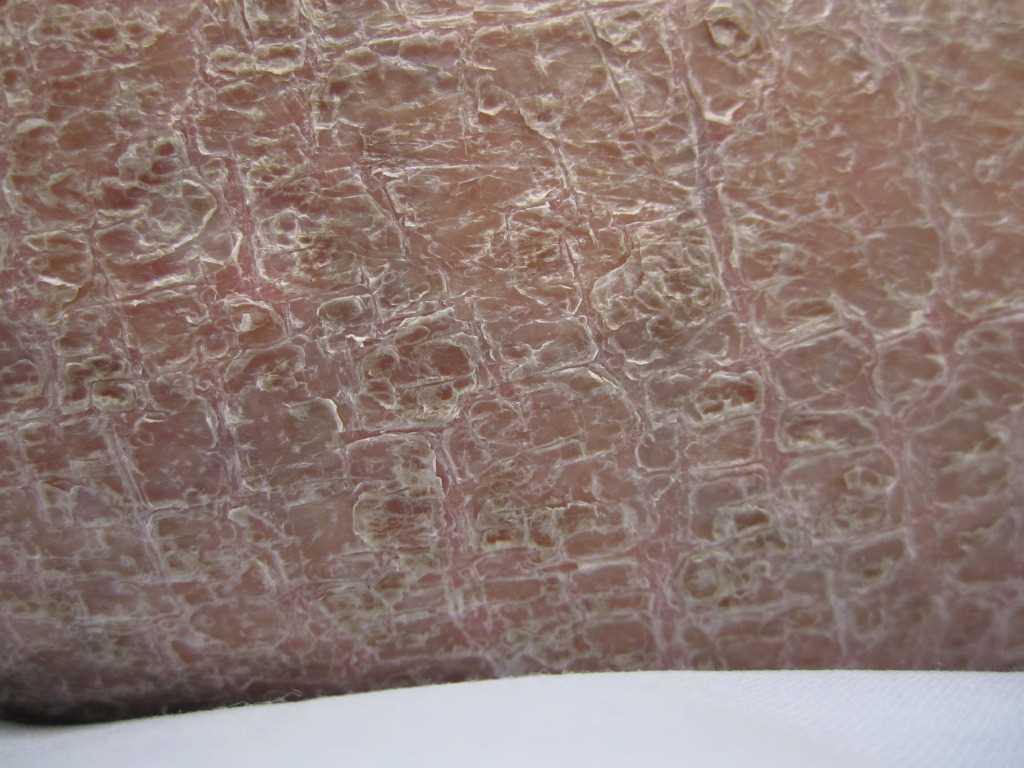[1]
Traupe H, Revealing the mysteries of X-linked recessive ichthyosis. The British journal of dermatology. 2018 Oct
[PubMed PMID: 30318799]
[3]
Basis for abnormal desquamation and permeability barrier dysfunction in RXLI., Elias PM,Crumrine D,Rassner U,Hachem JP,Menon GK,Man W,Choy MH,Leypoldt L,Feingold KR,Williams ML,, The Journal of investigative dermatology, 2004 Feb
[PubMed PMID: 15009711]
[4]
Role of cholesterol sulfate in epidermal structure and function: lessons from X-linked ichthyosis., Elias PM,Williams ML,Choi EH,Feingold KR,, Biochimica et biophysica acta, 2014 Mar
[PubMed PMID: 24291327]
[5]
X-linked ichthyosis: an oculocutaneous genodermatosis., Fernandes NF,Janniger CK,Schwartz RA,, Journal of the American Academy of Dermatology, 2010 Mar
[PubMed PMID: 20080321]
[6]
PCR diagnosis of X-linked ichthyosis: identification of a novel mutation (E560P) of the steroid sulfatase gene., Sugawara T,Shimizu H,Hoshi N,Fujimoto Y,Nakajima A,Fujimoto S,, Human mutation, 2000 Mar
[PubMed PMID: 10679952]
[7]
Mutations in X-linked ichthyosis disrupt the active site structure of estrone/DHEA sulfatase., Ghosh D,, Biochimica et biophysica acta, 2004 Dec 24
[PubMed PMID: 15607112]
[8]
Analysis of the STS gene in 40 patients with recessive X-linked ichthyosis: a high frequency of partial deletions in a Spanish population., Cañueto J,Ciria S,Hernández-Martín A,Unamuno P,González-Sarmiento R,, Journal of the European Academy of Dermatology and Venereology : JEADV, 2010 Oct
[PubMed PMID: 20236202]
[9]
Ahrens-Nicklas R,Schlotawa L,Ballabio A,Brunetti-Pierri N,De Castro M,Dierks T,Eichler F,Ficicioglu C,Finglas A,Gaertner J,Kirmse B,Klepper J,Lee M,Olsen A,Parenti G,Vossough A,Vanderver A,Adang LA, Complex care of individuals with multiple sulfatase deficiency: Clinical cases and consensus statement. Molecular genetics and metabolism. 2018 Mar;
[PubMed PMID: 29397290]
Level 3 (low-level) evidence
[10]
Segregation analysis in X-linked ichthyosis: paternal transmission of the affected X-chromosome., Toral-Lopez J,González-Huerta LM,Cuevas-Covarrubias SA,, The British journal of dermatology, 2008 Apr
[PubMed PMID: 18205863]
[11]
Atypical X-linked ichthyosis in a patient with a large deletion involving the steroid sulfatase (STS) gene., Gonzalez-Huerta L,Mendiola-Jimenez J,Del Moral-Stevenel M,Rivera-Vega M,Cuevas-Covarrubias S,, International journal of dermatology, 2009 Feb
[PubMed PMID: 19200188]
[12]
Deletion patterns of the STS gene and flanking sequences in Israeli X-linked ichthyosis patients and carriers: analysis by polymerase chain reaction and fluorescence in situ hybridization techniques., Aviram-Goldring A,Goldman B,Netanelov-Shapira I,Chen-Shtoyerman R,Zvulunov A,Tal O,Ilan T,Peleg L,, International journal of dermatology, 2000 Mar
[PubMed PMID: 10759956]
[13]
The phenotype spectrum of X-linked ichthyosis identified by chromosomal microarray., Hand JL,Runke CK,Hodge JC,, Journal of the American Academy of Dermatology, 2015 Apr
[PubMed PMID: 25659225]
[14]
Corneal manifestations of X-linked ichthyosis in two brothers., Haritoglou C,Ugele B,Kenyon KR,Kampik A,, Cornea, 2000 Nov
[PubMed PMID: 11095067]
[15]
Association of the steroid sulfatase (STS) gene with attention deficit hyperactivity disorder., Brookes KJ,Hawi Z,Kirley A,Barry E,Gill M,Kent L,, American journal of medical genetics. Part B, Neuropsychiatric genetics : the official publication of the International Society of Psychiatric Genetics, 2008 Dec 5
[PubMed PMID: 18937300]
[16]
Berges-Raso I,Giménez-Palop O,Gabau E,Capel I,Caixàs A,Rigla M, Kallmann syndrome and ichthyosis: a case of contiguous gene deletion syndrome. Endocrinology, diabetes
[PubMed PMID: 30352392]
Level 3 (low-level) evidence


